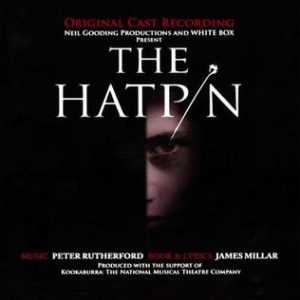
Edward Wetzork of Los Angeles started his collection about six years ago when he was looking for something different to buy his granddaughter. While women make up the bulk of the club’s membership, male members are also enthusiastic and knowledgeable collectors. “The ‘period’ hatpins, so collectible today,” Baker said, “became obsolete.” Designers also began to use narrow elastic bands and small combs sewn inside the hatband to position their millinery. Cropped and bobbed hair styles led to cloches and turbans, which did not need long pinning devices. She cited Jim the Jabber who used a hatpin to jab women as they got into the streetcar as an infamous example in early Los Angeles history.īy the mid-1920s, hat and hair styles changed dramatically. Although Baker said hatpins were rarely used by women as weapons, there are several instances of men using them in violent ways. In Chicago, Baker said, it was against the law to wear a concealed hatpin.
#Reminisce com hatpin trial
When news of that trial came across the Atlantic via the newly installed Marconi wireless, American suffragettes took the hat and accompanying hatpin as symbols of emancipation, Baker said.Īs hatpins became longer and longer, some cities adopted laws regarding their use. Because the upper- and middle-class women on trial would never want to be seen in public with their heads uncovered, forcing them to remove their hatpins-and thus their hats-humiliated them.

In 1908 hatpins became a symbol of political importance when a British judge ordered a group of suffragettes standing trial before him to remove their hatpins because he feared they would use them as weapons in the courtroom. Many are made of precious metals set with gemstones. Hatpins eventually reached a length of 14 inches and were fashioned by such designers as Carl Faberge, Rene Lalique and the Tiffany Studio. These are scarce because fewer were manufactured, partly because of changing fashion and partly because laws were written regulating the length of the pins. The most collectible pins are those with the longest pin-shanks. “The height of the era, however, was the period from 1870 through 1925 and reflects the influence in design of the Aesthetic period, the Arts and Crafts Movement, Art Nouveau and Art Deco.” Hatpins of this period can still be discovered at antique shops and shows and usually range in cost from $30 to $450. “Collectible hatpins were manufactured from 1850 to the 1920s,” Baker said. Members live as far away as Europe, where hatpins are avidly collected, but the largest concentration of members is here. Other collectors, upon reading the book, wrote to her suggesting the formation of a club to bring together the diverse group of about 300 fanciers, who range in age from 13 to 92. When she found out that little written information existed, Baker wrote the definitive book on the subject, “The Collector’s Encyclopedia of Hatpins and Hatpin Holders,” published by Collectors’ Books in 1976. Her background as a journalist and historian led her to seek more information about the decorative and beautifully made ornaments. The advent of the hatpin allowed women to secure their hats atop an elaborate hair style, often padded out with rats and switches.īaker’s fascination with hatpins began when she inherited several from her mother. “These women were the jet-set of their day.” At that period in the 18th and early 19th Century, the more accepted form of head covering was a bonnet or a hat tied down with ribbons. “The women in Gainsborough’s paintings who are shown wearing plumed hats were actually wearing noblemen’s hats,” Baker said. Nuns and nurses used their headgear to designate their order or school affiliation.

Only unmarried maidens wore their locks loose and flowing.

Married women, on the other hand, covered their hair with a wimple, cap or scarf and revealed their tresses only within the confines of home and boudoir.

“Meshach, Shadrach and Abednego even wore their hats into the fiery furnace,” Baker noted. From biblical times, men have worn hats to designate their station in life.


 0 kommentar(er)
0 kommentar(er)
